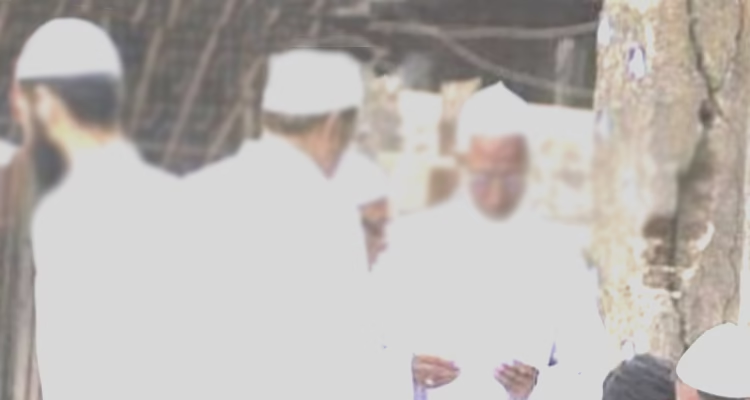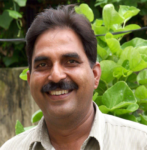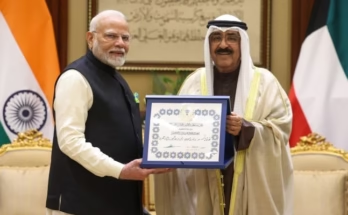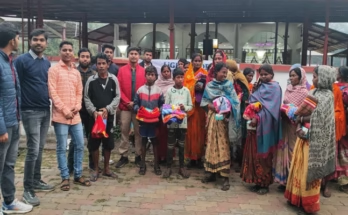
by Sanjay Saxena
 Lucknow: It is beyond comprehension why leaders of non-BJP parties seem to be concerned only about the backward and Dalit castes within Hindu society. Why does their attention not go towards the Dalit Muslims and backward Muslims who are deprived of their rights due to the higher-caste Muslims? Among Muslims, these Dalit and backward people are identified as the Pasmainda society. In fact, Indian Muslims are mainly divided into three caste groups: Ashraf, Ajlaf, and Arzal. These are caste groups, which include different sub-castes. Just as there are Brahmin, Kshatriya, Vaishya, and Shudra castes among Hindus, the same can be seen with Ashraf, Ajlaf, and Arzal in the Muslim community. Ashraf includes higher castes such as Sayyid, Sheikh, Pathan, Mirza, Mughal, etc. These Muslim castes are compared to the higher castes among Hindus, such as Brahmins, Kshatriyas, and Vaishyas. The second group is Ajlaf, which includes the so-called middle castes. There is a large number of them, including castes like Ansari, Mansuri, Rayan, Qureshi, etc. The Qureshi are involved in the meat trade, and the Ansaris are mainly associated with the cloth weaving profession. Their comparison among Hindus can be made with castes like Yadav, Koiri, and Kurmi. The third group is Arzal, which includes castes like Halalkhor, Hwari, Razzak, etc. These are the castes in Muslim society associated with occupations similar to those of the Scheduled Castes among Hindus, such as manual scavengers. The backwardness of these Muslim castes today is similar to that of their corresponding castes among Hindus.
Lucknow: It is beyond comprehension why leaders of non-BJP parties seem to be concerned only about the backward and Dalit castes within Hindu society. Why does their attention not go towards the Dalit Muslims and backward Muslims who are deprived of their rights due to the higher-caste Muslims? Among Muslims, these Dalit and backward people are identified as the Pasmainda society. In fact, Indian Muslims are mainly divided into three caste groups: Ashraf, Ajlaf, and Arzal. These are caste groups, which include different sub-castes. Just as there are Brahmin, Kshatriya, Vaishya, and Shudra castes among Hindus, the same can be seen with Ashraf, Ajlaf, and Arzal in the Muslim community. Ashraf includes higher castes such as Sayyid, Sheikh, Pathan, Mirza, Mughal, etc. These Muslim castes are compared to the higher castes among Hindus, such as Brahmins, Kshatriyas, and Vaishyas. The second group is Ajlaf, which includes the so-called middle castes. There is a large number of them, including castes like Ansari, Mansuri, Rayan, Qureshi, etc. The Qureshi are involved in the meat trade, and the Ansaris are mainly associated with the cloth weaving profession. Their comparison among Hindus can be made with castes like Yadav, Koiri, and Kurmi. The third group is Arzal, which includes castes like Halalkhor, Hwari, Razzak, etc. These are the castes in Muslim society associated with occupations similar to those of the Scheduled Castes among Hindus, such as manual scavengers. The backwardness of these Muslim castes today is similar to that of their corresponding castes among Hindus.
Former Rajya Sabha MP and leader of the Pasmainda Muslim Movement, Ali Anwar Ansari, states that caste discrimination works in Muslim society just like in Hindu society. Apart from marriage and professions, Muslims have different customs and practices for different castes. Muslims prefer to marry within their own caste. Even in Muslim localities, caste-based colonies are visible. Some Muslim castes have colonies on one side, while others are on the other side. In Western Uttar Pradesh’s Sambhal, Turkish and Lodi Muslims live, and there is considerable tension between them, with their own separate localities. This is also seen in politics. Ali Anwar says that from birth to death, Muslims are divided along caste lines. Not only marriages, but there is hardly any interaction or relationships between different Muslim castes, except for a few exceptions. Many mosques have been built on the basis of caste. In villages, cemeteries are also constructed according to caste. Halalkhor, Hwari, Razzak, and similar Muslim castes are not allowed to be buried in the cemeteries of Sayyid, Sheikh, or Pathan castes. According to him, sometimes even the police have to be called. There are at least 15 such Muslim castes that should be granted Scheduled Caste status. Among Muslims, backward castes are placed in the OBC category, but castes like Halalkhor do not benefit, even though their backwardness is similar to that of Hindu Dalits.
In this regard, Professor Tanveer Fazal explains that when people converted to Islam, they carried their caste identities along with them. Even after embracing Islam, they did not abandon their caste. It is believed that the Rajputs who converted to Islam in Uttar Pradesh still retain the title “Chauhan” with their names and continue to identify as Rajputs. It is also believed that the Turks, Mughals, and Afghans who came to India gave higher positions to their own people in governance and viewed the indigenous people as inferior. According to Professor Fazal, this might be where the origin of caste-based distinctions in the Muslim community began.
These points are mentioned because recently, Prime Minister Narendra Modi criticized the opposition, asking why they do not address the issue of Dalits and backward castes within Muslims. Modi raised questions about Congress’s demand for caste-based census, claiming that their focus on caste-based census among Hindus was aimed merely at inciting division among different Hindu castes, while remaining silent on the issue of various Muslim castes. Although Modi’s remarks targeted Congress and the Gandhi family, this situation applies to all parties that engage in appeasement politics or Muslim vote-bank politics. This includes leaders from the Samajwadi Party, BSP, Lalu Yadav’s party, Mamata Banerjee, and Arvind Kejriwal’s party.
It is also important to recall that while Congress, under the leadership of Nehru to Rajiv Gandhi, opposed caste-based discrimination, the same Congress government, led by Manmohan Singh and Sonia Gandhi, failed to publish the caste-wise data of the OBCs from the 2011 Census, despite promising to do so. The irony is that today the Congress and the Gandhi family are the most vocal advocates of caste-based census. Congress’s silence on the issue of different Muslim castes and their neglect of social justice for them raises questions about their social justice policies. Prime Minister Modi has consistently highlighted the issue of Muslim castes and their struggle for social justice, but so-called secular-liberal, Congress, and Communist leaders avoid discussing Muslim castes, and their social justice struggles seem to hold no significance for them. This attitude naturally causes resentment among the Pasmainda society. However, this community has no political alternatives and cannot trust the BJP, as deep-seated animosity has been fostered against the BJP in their hearts.
In the context of caste-based discrimination in the Muslim community and the inability of a large section of it to obtain their due rights, it becomes absolutely essential to collect caste-based data for the OBCs, so that all eligible communities can benefit from reservations and other welfare schemes in education, employment, and politics. The Kaka Kalelkar Commission’s report of 1955 had already declared some Muslim and other religious communities as backward. The Mandal Commission had also acknowledged that caste-like structures exist not only in Hindu society but also among non-Hindu groups—Muslims, Sikhs, and Christians. Similarly, in the Indira Sahani v. Union of India case, a nine-judge bench had rejected the economic criteria for determining backwardness, stating that caste could be a social category, and this category often exists among non-Hindus like Muslims and other communities. The court also said that the identification of backwardness should be based on the traditional occupations of these communities. This clearly shows that it is justifiable to talk about the caste-based census of Muslims. However, parties that claim to be the defenders of Muslim interests and social justice have shown no initiative in this direction.
Overall, until a consensus is reached on the general caste-based census, emphasis should be placed on conducting a caste-based census of Muslims, so that social justice can be established in Muslim society. The current situation of Muslim society is neither beneficial to the Muslims nor to the nation. Until all communities in the country are properly integrated into the mainstream through appropriate participation in various sectors, the country cannot be considered developed or prosperous. Not only Muslims but all sections of society, including the media, need to understand that the Muslim community is also divided into upper and lower castes, Dalits, and tribals. Policies that have been formulated assuming Muslim society as a homogeneous group must be revisited, taking into account the caste structure in Muslim society, and policies should be formulated accordingly. For this, conducting a caste-based census of Muslims is the only viable solution.



